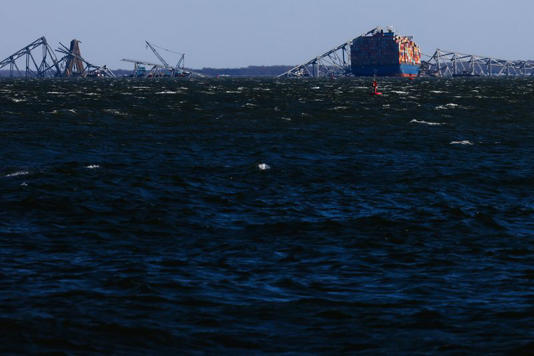The collapse of the Francis Scott Key Bridge in Baltimore, Maryland, following a collision with a cargo ship has sent shockwaves through the community and raised urgent questions about infrastructure safety and emergency response. As recovery efforts intensify and authorities grapple with the aftermath of the tragedy, it is essential to examine the events leading up to the incident, assess the ongoing response efforts, and explore the broader implications for port operations, transportation industries, and immigrant communities. This article aims to provide a comprehensive analysis of the Francis Scott Key Bridge disaster, shedding light on the challenges faced and the resilience demonstrated in the face of adversity.
The Collision and Bridge Collapse: The Francis Scott Key Bridge collapse occurred when a massive cargo ship, the Dali, lost power and collided with a support column of the bridge, leading to its collapse into the Patapsco River. The incident resulted in significant damage to the bridge structure, disruption of port operations, and the tragic loss of six workers presumed dead. Divers have recovered two bodies, while four remain missing, highlighting the human toll of the disaster.
Emergency Response and Recovery Efforts: In the immediate aftermath of the bridge collapse, emergency responders and government agencies mobilized to assess the damage, search for survivors, and mitigate further risks. The deployment of large cranes to clear debris from the river and recover the vessel underscores the complexity of the recovery operation. State and federal authorities have allocated emergency funds to expedite debris removal and bridge reconstruction, emphasizing the importance of restoring critical infrastructure and minimizing economic disruptions.
Impact on Port Operations and Transportation: The Francis Scott Key Bridge is a vital transportation artery, facilitating the movement of goods and cargo along the Eastern Seaboard. The collapse of the bridge has paralyzed port operations, affecting thousands of workers and disrupting supply chains. The suspension of port activities underscores the interconnectedness of maritime commerce and the need for resilient infrastructure to support uninterrupted trade flows.
Humanitarian Considerations and Immigrant Communities: The tragedy has brought attention to the plight of immigrant workers employed in construction and port-related industries. The workers involved in the bridge repair efforts, many of whom were immigrants from Mexico and Central America, tragically lost their lives in the collision. Their contributions to the local economy and their families’ struggles underscore the need for adequate support and recognition of immigrant communities’ vital role in infrastructure projects.
Lessons Learned and Future Preparedness: As recovery efforts continue, it is crucial to reflect on the lessons learned from the Francis Scott Key Bridge disaster. Improved safety protocols, enhanced infrastructure resilience, and effective emergency response mechanisms are essential for preventing similar incidents in the future. Moreover, greater investment in workforce development and social safety nets can mitigate the impact of such disasters on vulnerable communities.
The Francis Scott Key Bridge disaster serves as a sobering reminder of the fragility of infrastructure and the importance of proactive risk management and emergency preparedness. As recovery efforts progress and the community mourns the loss of lives, it is imperative to prioritize safety, resilience, and solidarity in rebuilding efforts. By addressing the systemic vulnerabilities exposed by the tragedy, we can strive to create a more resilient and equitable future for all.
